
CORPORAL VEIL, FLAT NEEDLE-POINT LACE.
PRESENTATION CONVENT INDUSTRY, YOUGHAL, COUNTY CORK. IRELAND.
COTTAGE INDUSTRIES IN SCOTLAND AND IRELAND.
THE exhibits of women's work from Scotland and Ireland have been collected respectively by the committees of the Scottish and Irish Home Industries associations, societies which have both been formed within the past two years with the object of promoting and developing home industries among the people, especially in outlying country districts, where the crofters and peasants find so much difficulty in earning their livelihood.
The homespuns made in the highlands and islands of Scotland have long enjoyed a well-deserved reputation, and specimens of these, along with the well-known hand-knitted stockings and gloves, are here on exhibition. A native of Harris has also brought over
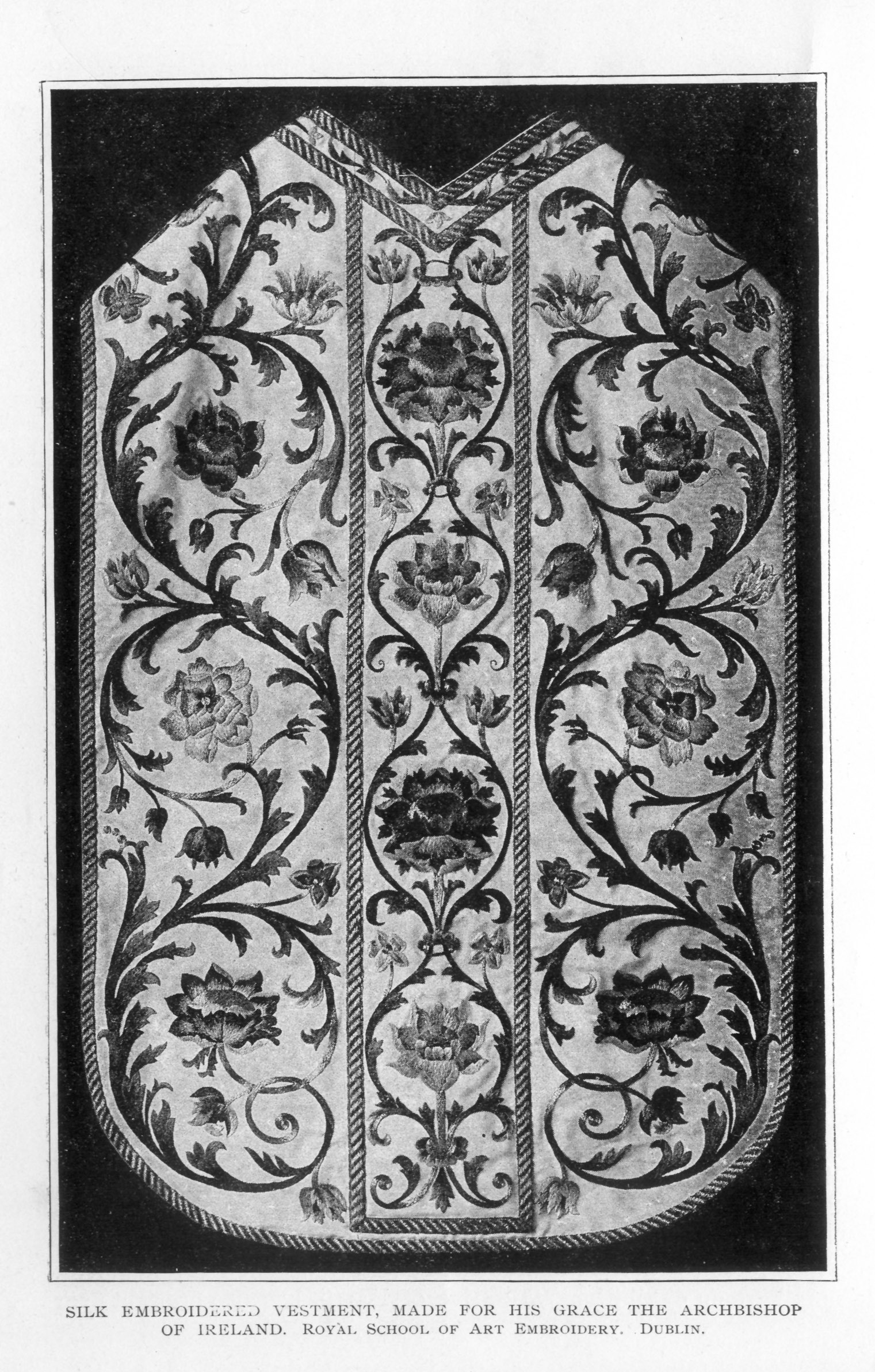
SILK EMBROIDERED VESTMENT, MADE FOR HIS GRACE THE ARCHBISHOP OF IRELAND.
ROYAL SCHOOL OF ART EMBROIDERY. DUBLIN.
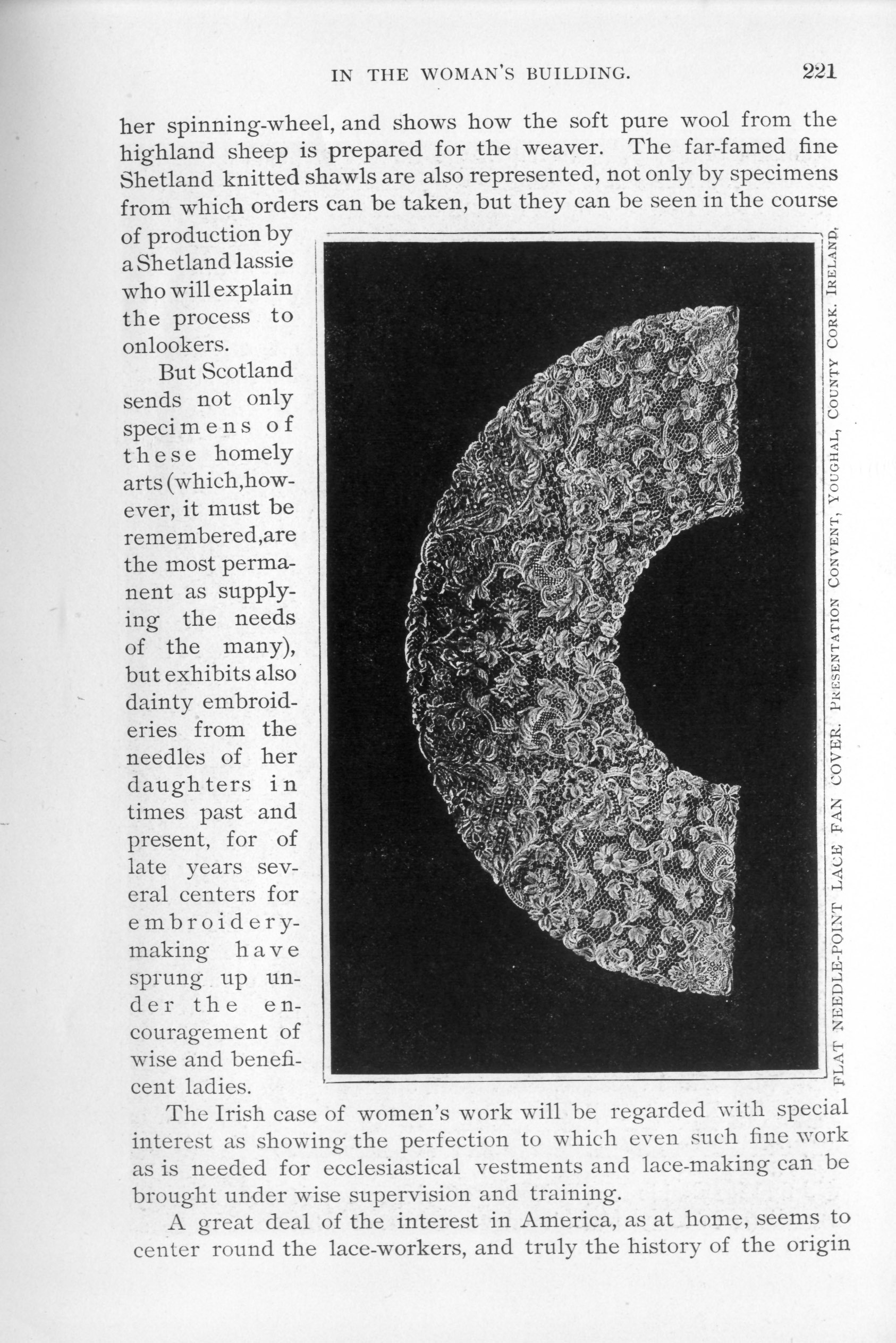
FLAT NEEDLE-POINT LACE FAN COVER.
PRESENTATION CONVENT, YOUGHAL, COUNTY CORK. IRELAND.
her spinning-wheel, and shows how the soft pure wool from the highland sheep is prepared for the weaver. The far-famed fine Shetland knitted shawls are also represented, not only by specimens from which orders can be taken, but they can be seen in the course of production by a Shetland lassie who will explain the process to onlookers.
But Scotland sends not only specimens of these homely arts (which, however, it must be remembered, are the most permanent as supplying the needs of the many), but exhibits also dainty embroideries from the needles of her daughters in times past and present, for of late years several centers for embroidery-making have sprung up under the encouragement of wise and beneficent ladies.
The Irish case of women's work will be regarded with special interest as showing the perfection to which even such fine work as is needed for ecclesiastical vestments and lace-making can be brought under wise supervision and training.
A great deal of the interest in America, as at home, seems to center round the lace-workers, and truly the history of the origin

of Irish lace-making, as well as its results, is well worthy of the attention of those interested in the revival of home industries. Most of the lace-making centers were started during the terrible famine times of 1847 by charitable ladies intent on finding some opening for work for the starving poor. Such was the origin of what became the wide-spread crochet industry in the South of Ireland, and round about Clones in the North, arising from the initiative of the good Ursuline Sisters at Blackrock in the one case, and in the other of Mrs. Hand, the rector's wife, at Clones. Mrs. Mary Ann Smith of the Presentation Convent at Youghal found an old piece of lace and mastered its art herself, and then set to work to teach it to the poor girls around, who were striving to earn a subsistence on a sort of muslin embroidery long out of date, and at which a moderately good worker could earn a penny per ten hours. From this effort has sprung the far-famed beautiful Irish point lace.
Many other instances might be quoted of lace industries arising out of famine times, but there are two laces which have different histories, the Carrickmacross and the Limerick. In the year 1820 Mrs. Grey Porter, the wife of the rector of Dunnamoyne, taught her servant to make lace from a specimen she had brought from Italy. The circumstance suggested the idea of teaching lace-making to the poor, to a Miss Reid of Radance, near Carrickmacross. Classes were started, and you can now find scores of cottage-workers in that district depending mainly on this industry for their living. It is scarcely possible to conceive how these beautiful laces come so clean and dainty for bridal array from such poor homes.
The Limerick lace is the one Irish lace which owes its birth to a spirit of commercial venture. Mr. Charles Walker brought over twenty-four teachers to Limerick, about 1829, to teach lace-making, and it became a flourishing business, employing some fifteen hundred hands. A short time ago I saw one of the original workers at the lace, an old lady of over eighty, who is proud to tell of how she is the one survivor of the four women who made Her Majesty's wedding-veil. Limerick lace is the least expensive of Irish laces, and when worked out well in a good design is very pretty, light, and effective. But it fell off in quality of late years, until Mrs. R. Vere O'Brien set to work to revive it by means of able supervision and good designs. We greatly hope that this lace will again come into popular favor, and that our friends in America will find it suitable for the Easter offerings they give their clergy, as well as in the embroidered vestments, of which we make so brave a show at Chicago.
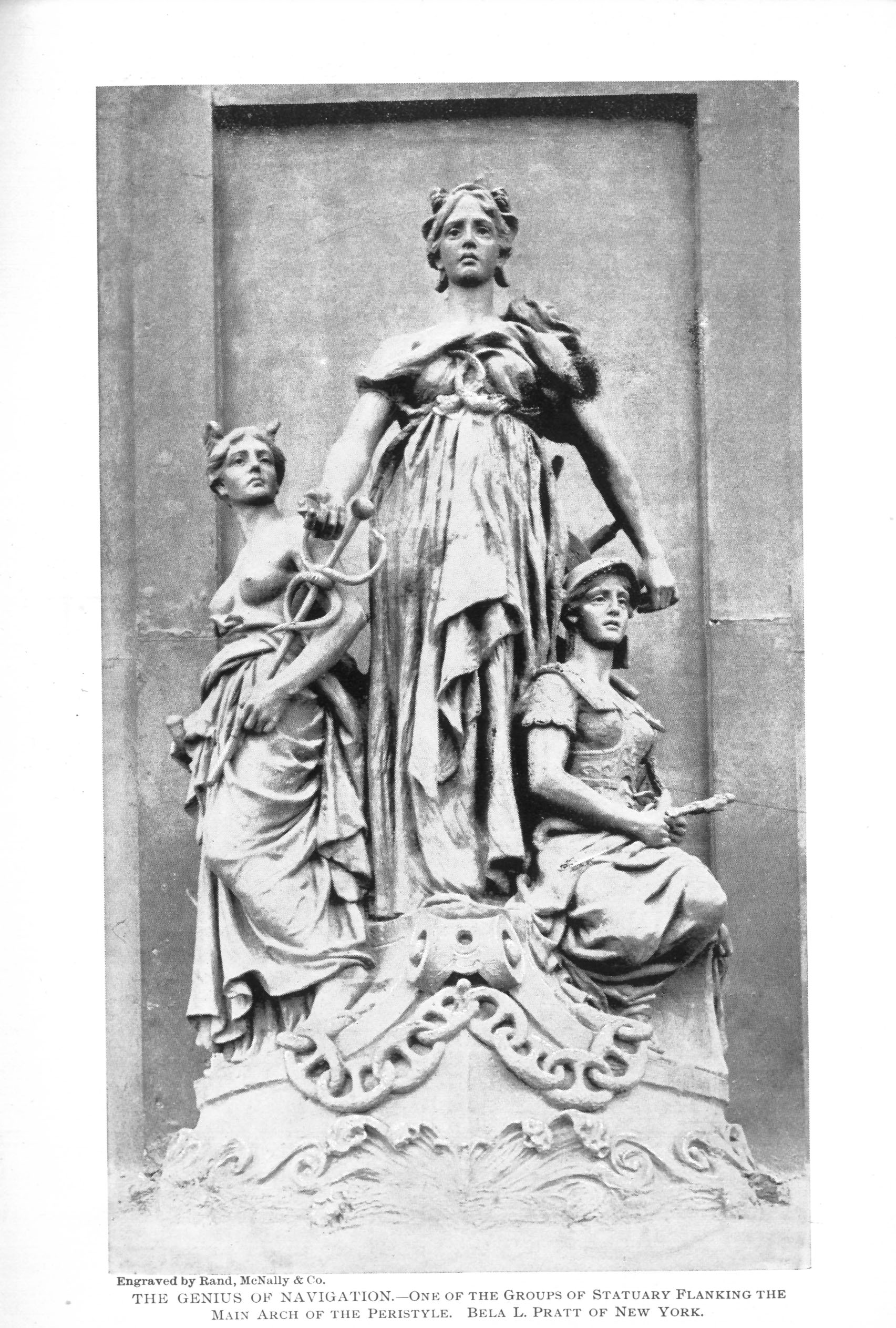
Engraved by Rand, McNally & Co.
THE GENIUS OF NAVIGATION.—
ONE OF THE GROUPS OF STATUARY FLANKING THE MAIN ARCH OF THE PERISTYLE.
BELA L. PRATT OF NEW YORK.

Engraved by Rand, McNally & Co.
VIEW AT THE NORTH END OF THE LAGOON.
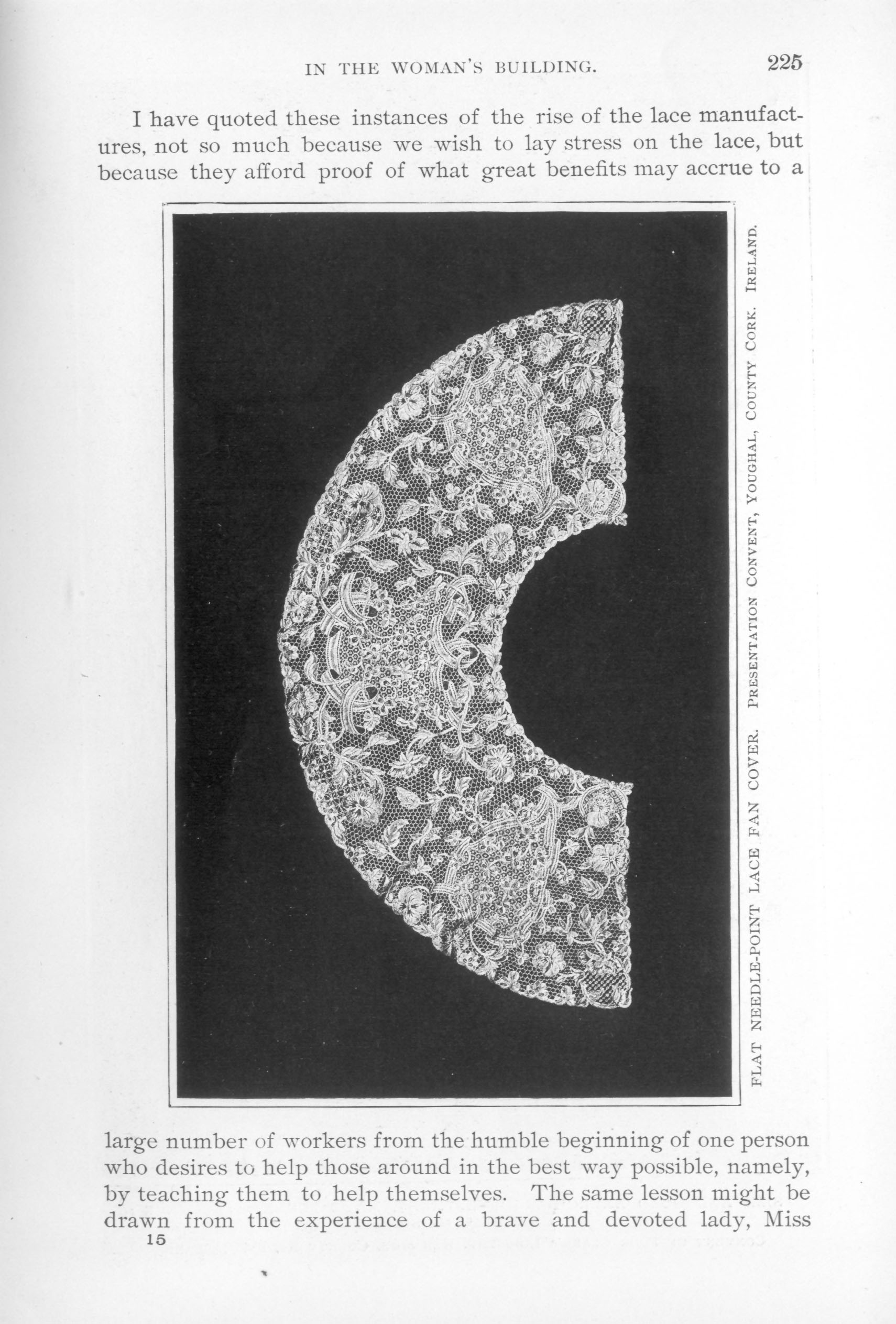
FLAT NEEDLE-POINT LACE FAN COVER.
PRESENTATION CONVENT, YOUGHAL, COUNTY CORK. IRELAND.
I have quoted these instances of the rise of the lace manufactures, not so much because we wish to lay stress on the lace, but because they afford proof of what great benefits may accrue to a large number of workers from the humble beginning of one person who desires to help those around in the best way possible, namely, by teaching them to help themselves. The same lesson might be drawn from the experience of a brave and devoted lady, Miss
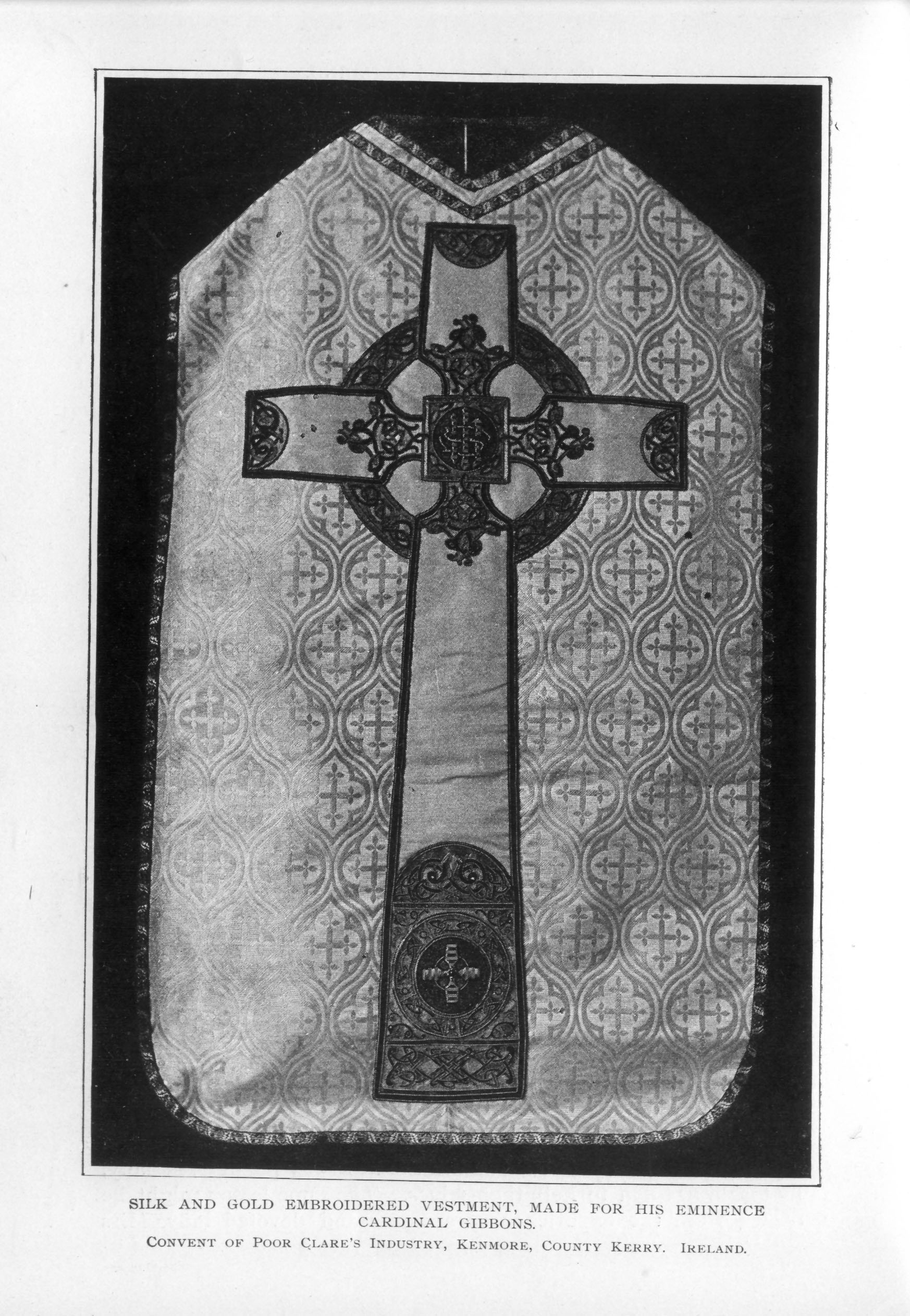
SILK AND GOLD EMBROIDERED VESTMENT, MADE FOR HIS EMINENCE CARDINAL GIBBONS.
CONVENT OF POOR CLARE'S INDUSTRY, KENMORE, COUNTRY KERRY. IRELAND.
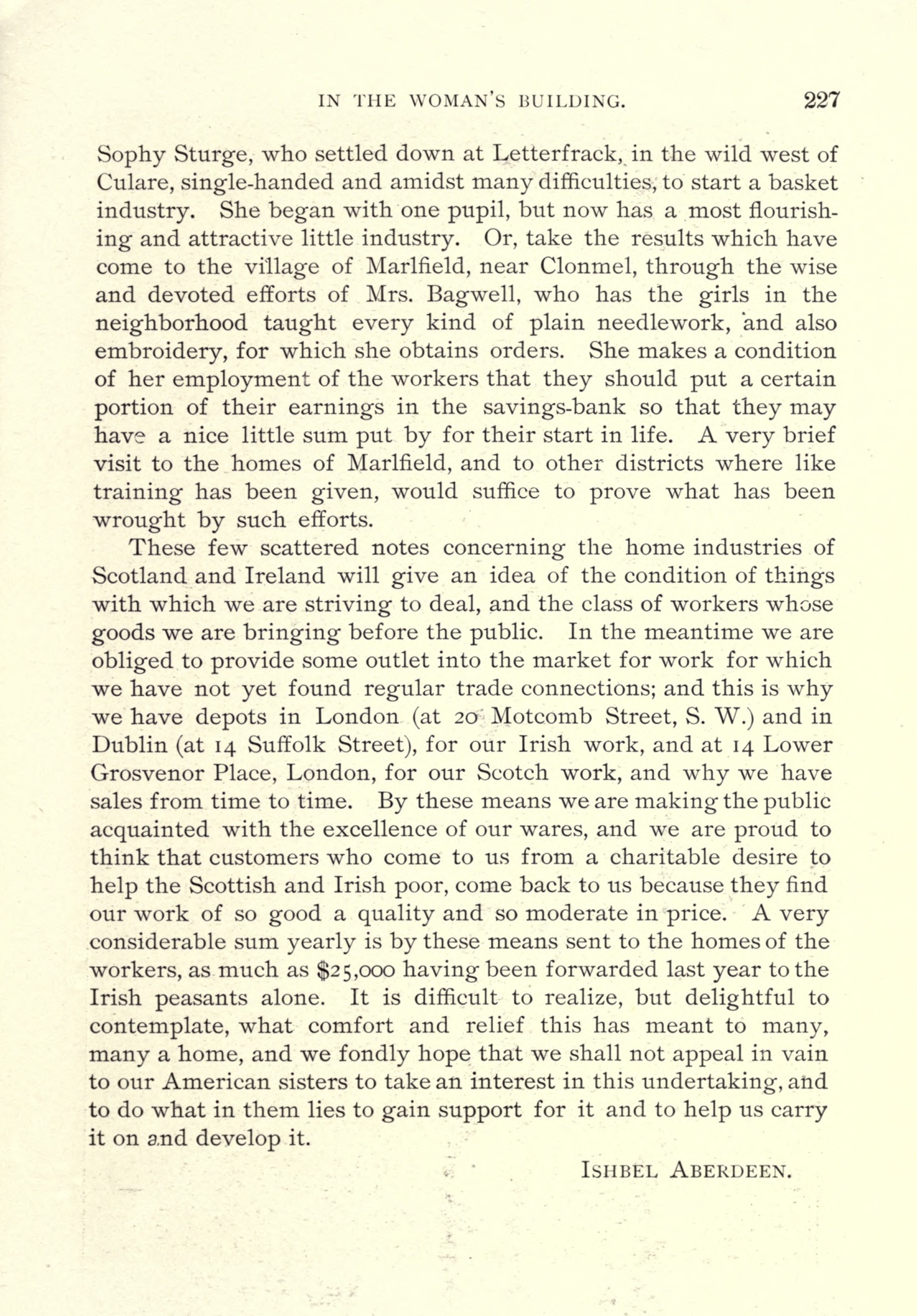
Sophy Sturge, who settled down at Letterfrack, in the wild west of Culare, single-handed and amidst many difficulties, to start a basket industry. She began with one pupil, but now has a most flourishing and attractive little industry. Or, take the results which have come to the village of Marlfield, near Clonmel, through the wise and devoted efforts of Mrs. Bagwell, who has the girls in the neighborhood taught every kind of plain needlework, and also embroidery, for which she obtains orders. She makes a condition of her employment of the workers that they should put a certain portion of their earnings in the savings-bank so that they may have a nice little sum put by for their start in life. A very brief visit to the homes of Marlfield, and to other districts where like training has been given, would suffice to prove what has been wrought by such efforts.
These few scattered notes concerning the home industries of Scotland and Ireland will give an idea of the condition of things with which we are striving to deal, and the class of workers whose goods we are bringing before the public. In the meantime we are obliged to provide some outlet into the market for work for which we have not yet found regular trade connections; and this is why we have depots in London (at 20 Motcomb Street, S. W.) and in Dublin (at 14 Suffolk Street), for our Irish work, and at 14 Lower Grosvenor Place, London, for our Scotch work, and why we have sales from time to time. By these means we are making the public acquainted with the excellence of our wares, and we are proud to think that customers who come to us from a charitable desire to help the Scottish and Irish poor, come back to us because they find our work of so good a quality and so moderate in price. A very considerable sum yearly is by these means sent to the homes of the workers, as much as $25,000 having been forwarded last year to the Irish peasants alone. It is difficult to realize, but delightful to contemplate, what comfort and relief this has meant to many, many a home, and we fondly hope that we shall not appeal in vain to our American sisters to take an interest in this undertaking, and to do what in them lies to gain support for it and to help us carry it on and develop it.
ISHBEL ABERDEEN.
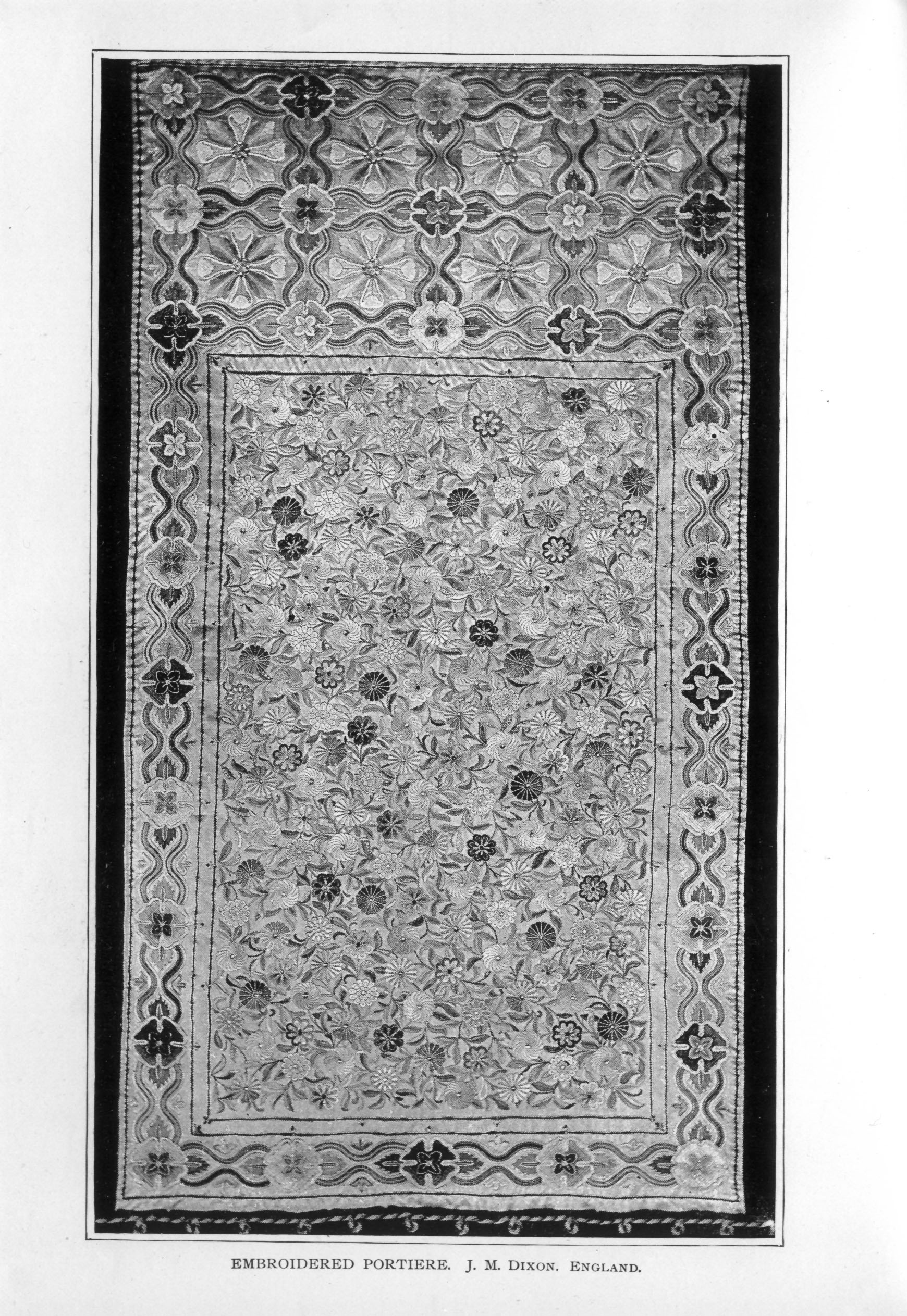
EMBROIDERED PORTIERE.
J. M. DIXON.
ENGLAND.